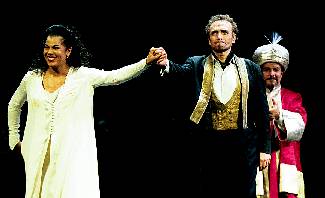2015-03-21 The Grand Duchess of Gérolstein (Jacques Offenbach),
Teatro de la Zarzuela (Madrid)
LA GRAN DUQUESA = Susana Cordón
FRITZ = José Luis Sola
WANDA = Elena Sancho
EL CONDE PUCK = Manuel de Diego
EL GENERAL BUM = Gerardo Bullón
EL PRÍNCIPE POL = Gustavo Peña
EL BARÓN GROG = Francisco Crespo
EL CAPITÁN NEPOMUCENO = Enrique R. del Portal
IZA = Leonor Bonilla
OLGA = Nuria García
AMELIA = Ana Cadaval
CARLOTA = Hanna Moroz
Bailarines
Estíbaliz Barroso, José Ángel Capel, Araceli Caro, Íñigo Celaya, Estefanía Corral, José Antonio Domínguez, Alberto Escobar, Daniel Ramos, Susana Román, Sara Peña
Figuración
Ariel Carmona, Javier Crespo, Pablo Garzón, Javier Martínez, Iván Nieto, Joseba Priego, Marcos Rivas, Pedro Ángel Roca, Robson Dos Santos, Israel Trujillo, Gustavo Adrián Villalba, Álvar Zarco
Orquesta de la Comunidad de Madrid
Coro del Teatro de La Zarzuela
Director:
Antonio Fauró
Music director:
Cristóbal Soler
Stage director, sets and costumes:
Pier Luigi Pizzi
For more reviews from my travels, see www.operaduetstravel.com If you want to see more photos from my OperaDuets Travels, go to www.operaduetsphotos.com





















